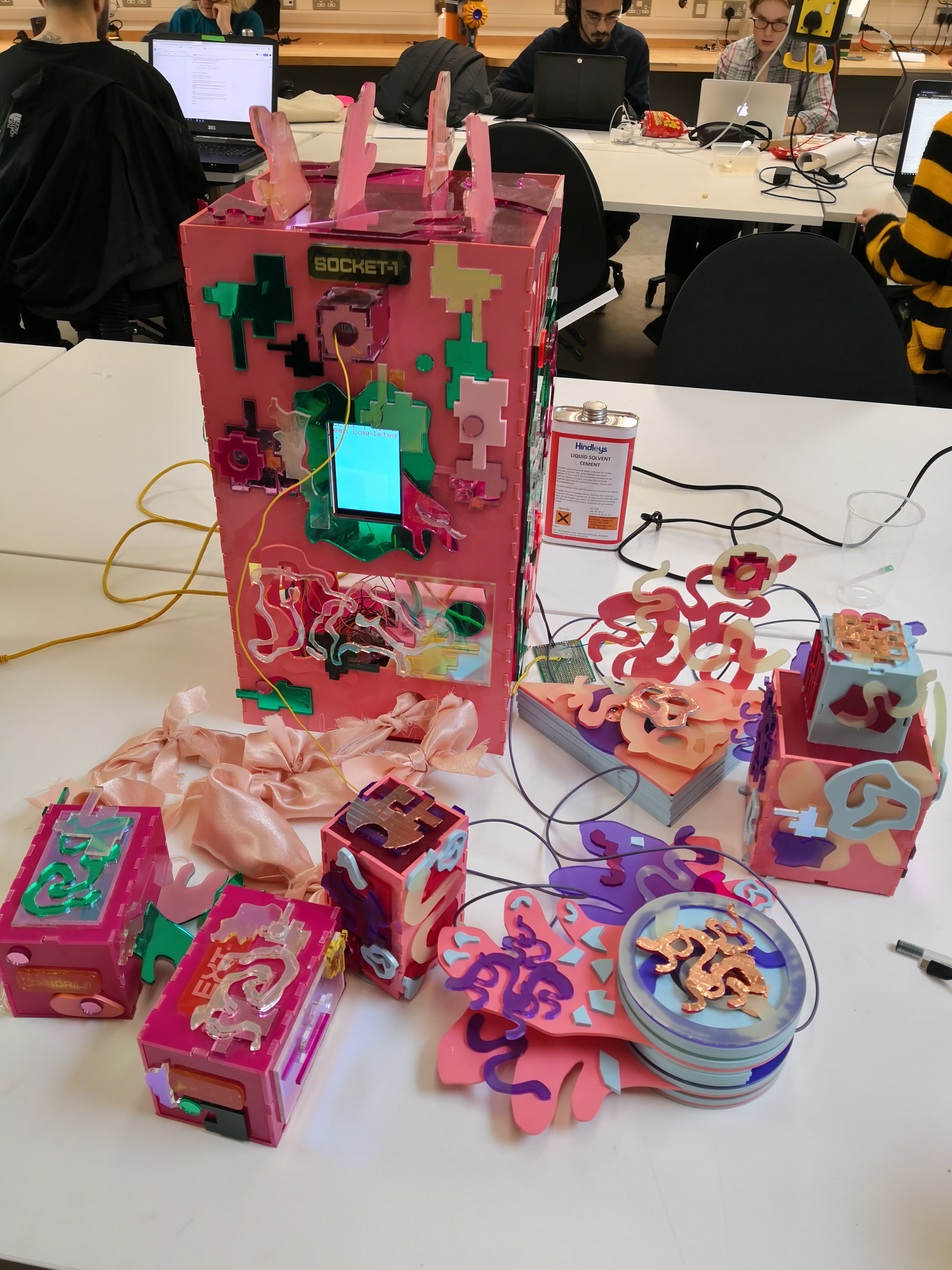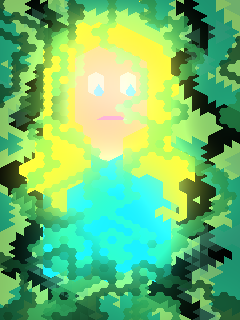Void of Memory
Void of Memory is a narrative, alternative controller (alt-control) game that takes place in the near future. The story is set in a future where server farms made out of ever-changing organic material grow into ornate shapes molded by the data that they collect. The player meets a malicious spirit trapped in the server. They are presented with the opportunity to liberate this entity and subvert the surveillance system or to maintain the status quo.
I created this game while completing my MFA in Computational Arts at Goldsmiths. Void of Memory has been featured in festivals such as A MAZE, Interactive Futures, and the Leftfield Collection at EGX Rezzed.
I made this game using an Arduino Mega, an LCD screen, and various sensors as inputs. The laser cut case is designed to look like an ornate, futuristic server. The player makes decisions within the game by interacting with the server’s many tendrils. This interface has gone through several iterations, but the player has been able to interface with the server by
- picking and moving its tendrils
- by picking up a small, shiny data transmitter and sending signals through the server’s socket
- or by stacking various components in order to form a circuit
This game is played by sitting in front of the server and reading the text on the LCD screen. The LCD screen displays instructions, dialogue and imagery. Players are presented with options on which actions they can take. They are told which part of the server’s interface to use in order to select the option.
Below are various iterations of Void of Memory:









This is some of the pixel art which appeared on the small LCD screen:







Here are some early examples of concept art which depicted the world of the server:




Below are some videos of Void of Memory prototypes and gameplay:
Technology
This game was powered by an Arduino Mega. The inputs originally consisted of a button and an altimeter. For the second iteration, I wanted to use analog inputs to create the feeling of natural, variable data. I created a device that sends infrared signals to the server. The wireless communication between the server and the transmitting device would create the illusion of lifelikeness. The infrared signal proved to be too unpredictable, therefore for the third iteration, I chose to only use binary, digital inputs. Throughout the previous iterations I had realized that players attributed more complexity to the server than there actually was. I decided to “dress up” the binary inputs as ornate structures that players could stack together in order to complete a circuit.
Final Iteration
Void of Memory was accidentally shattered while being transported to another location. It inspired this A MAZE Livestream about making alt-controls out of shattered elements and miscellaneous parts. It is currently resting in an attic and may be resurrected in the future.